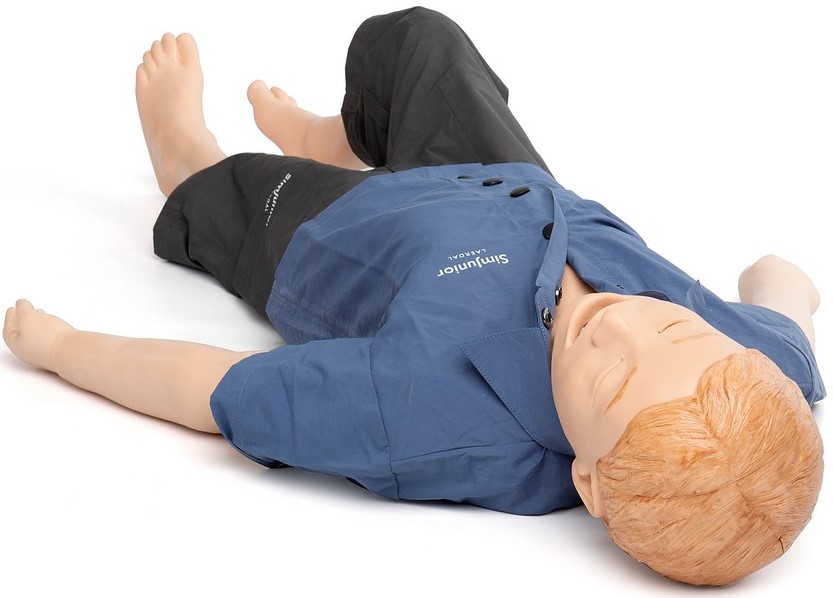High Fidelity Manikin Simulation
A term often used to refer to the broad range of full-body manikins that have the ability to mimic, at a very high level, human body functions (Lopreiato, J. O. (Ed.), Downing, D., Gammon, W., Lioce, L., Sittner, B., Slot, V., Spain, A. E. (Associate Eds.), and the Terminology & Concepts Working Group. (2016). Healthcare Simulation Dictionary. Retrieved from http://www.ssih.org/dictionary).
These high fidelity manikins that have pulses, blood pressure, breathe, lung sounds, heart sounds, pulse oximetry and a monitor that can display EKG, arterial waveforms, pulmonary artery waveforms, etc. These manikins can be used to create and allow participants to practice procedures such as CPR, bag-mask ventilation, intubation, defibrillation, and others.
The use of high fidelity manikins provides a high level of realism to simulation, allowing complex medical scenarios to be performed in a safe and regulated environment. This is done without risks to patients, and re-enforces the learning process.
Available High Fidelity Manikins:
SimNewB (Full term newborn)
Versatile simulator, able to produce multiple newborn conditions, and improve the learner’s proficiency and safety in the neonatal arena.

SimBaby (6 months – 18 months)
Realistic simulator, that will help the learner identify and respond to the needs of a critically ill infant.

SimJunior (4 years – 8 years)
Interactive pediatric manikin, allowing learners to become proficient with basic skills, as well as training for the critically ill, pediatric emergencies.

SimMan ALS (Adolesence - Adult)
High tech, multi-function adult manikins, adept in running basic cases as well as highly complex scenarios, for all levels of learners. Features include: spontaneous breathing (bilateral and unilateral chest rise), normal/abnormal breath sounds, difficult airway scenarios, palpable pulses – synchronized with EKG, QCPR – recognition of depth, release and frequency of compressions with real time feedback, in addition to comprehensive monitoring of respiratory, cardiac, hemodynamic and neurologic parameters.

Hybrid Simulation
Simulation cases performed that require the use of both standardized patients/simulated patients (SP), along with high-fidelity manikins or partial task trainers. This allows for the teaching and assessment of both technical skills and communication skills, in an integrated fashion.
In-Situ Simulation
When a simulation activity occurs in the actual patient care setting/environment such as a hospital unit or emergency room. This assists the simulation to a in an effort to achieve a high level of realism, and are usually unannounced. The participants are on-duty clinical providers during their actual shift. This training is valuable to assess, troubleshoot, or develop new system processes. Given that the simulation occurs in the clinical environment, there are opportunities to identify hazards and deficiencies in the clinical systems, the environment, and the provider team.
Scheduling Manikin Simulations (including Hybrid and In-Situ)
- New events or events requiring new case materials/revision of case materials must be scheduled 12 weeks in advance
- Repeat manikin simulations must be scheduled 4 weeks in advance
- Hybrid manikin simulations requiring an SP must be scheduled 12 weeks in advance
For questions, contact us: clinicalsimcenter@stonybrookmedicine.edu
To schedule an event: https://stonybrookuniversity.co1.qualtrics.com/jfe/form/SV_cIODL7V1oPTF0a1

